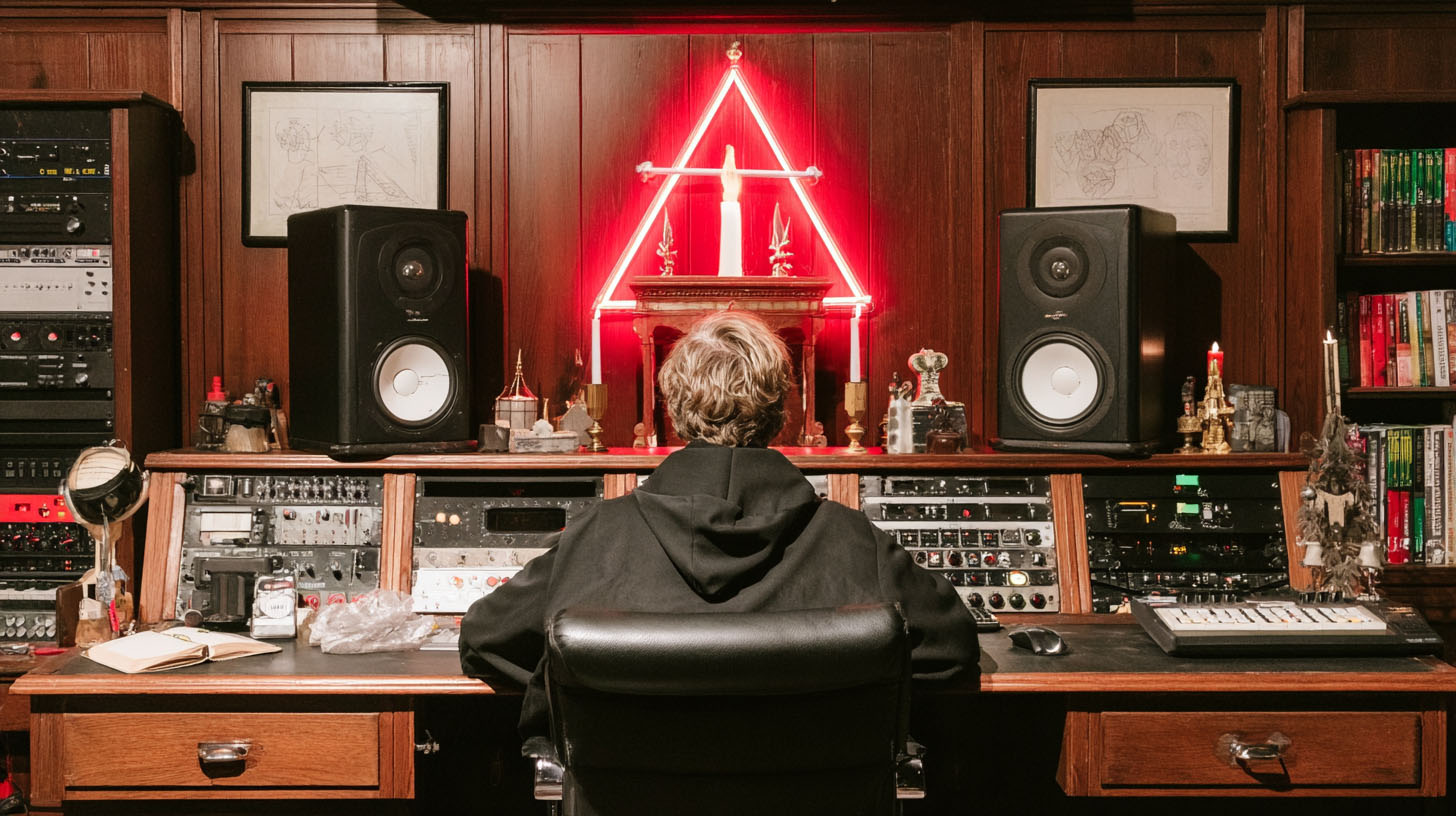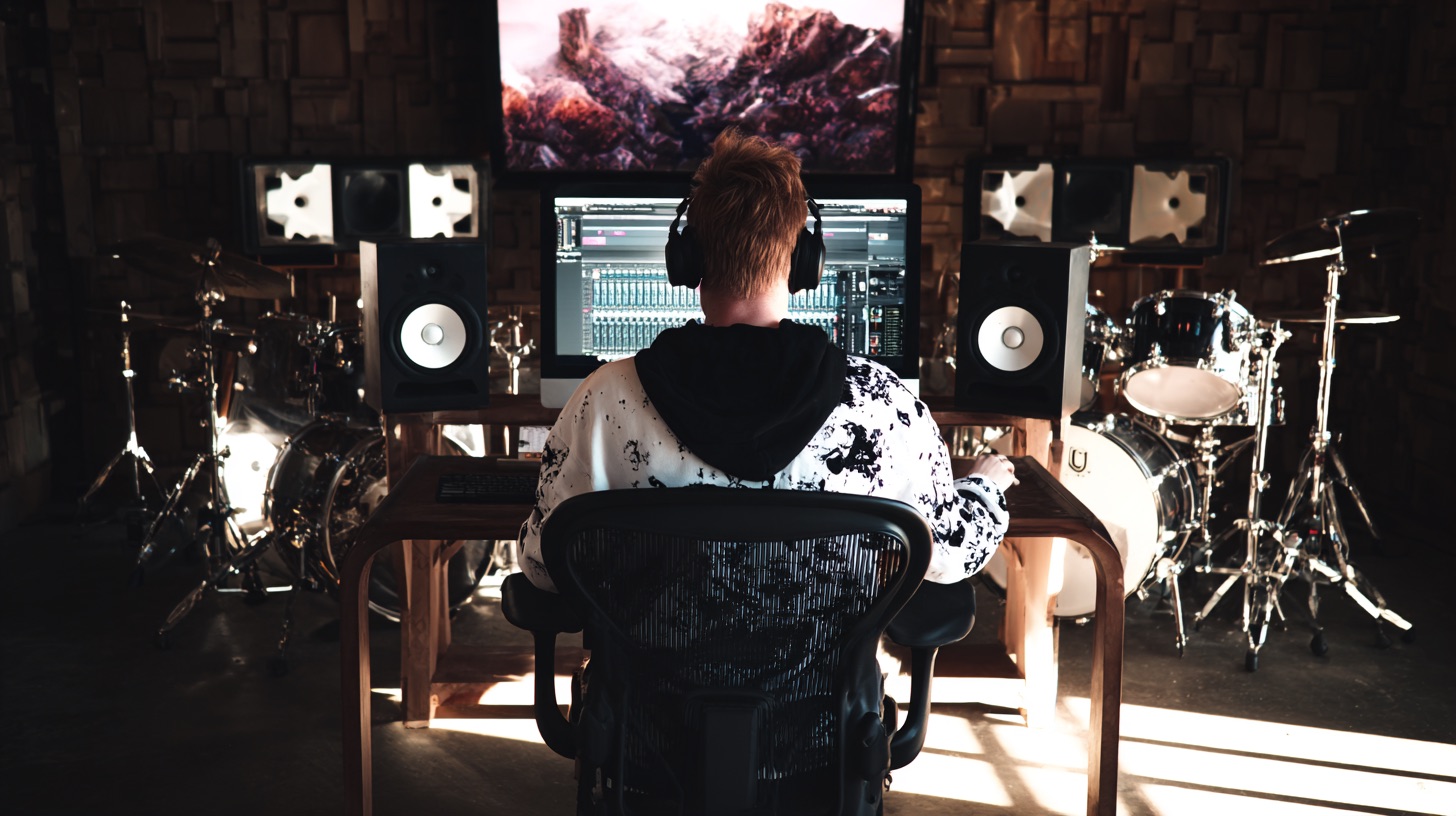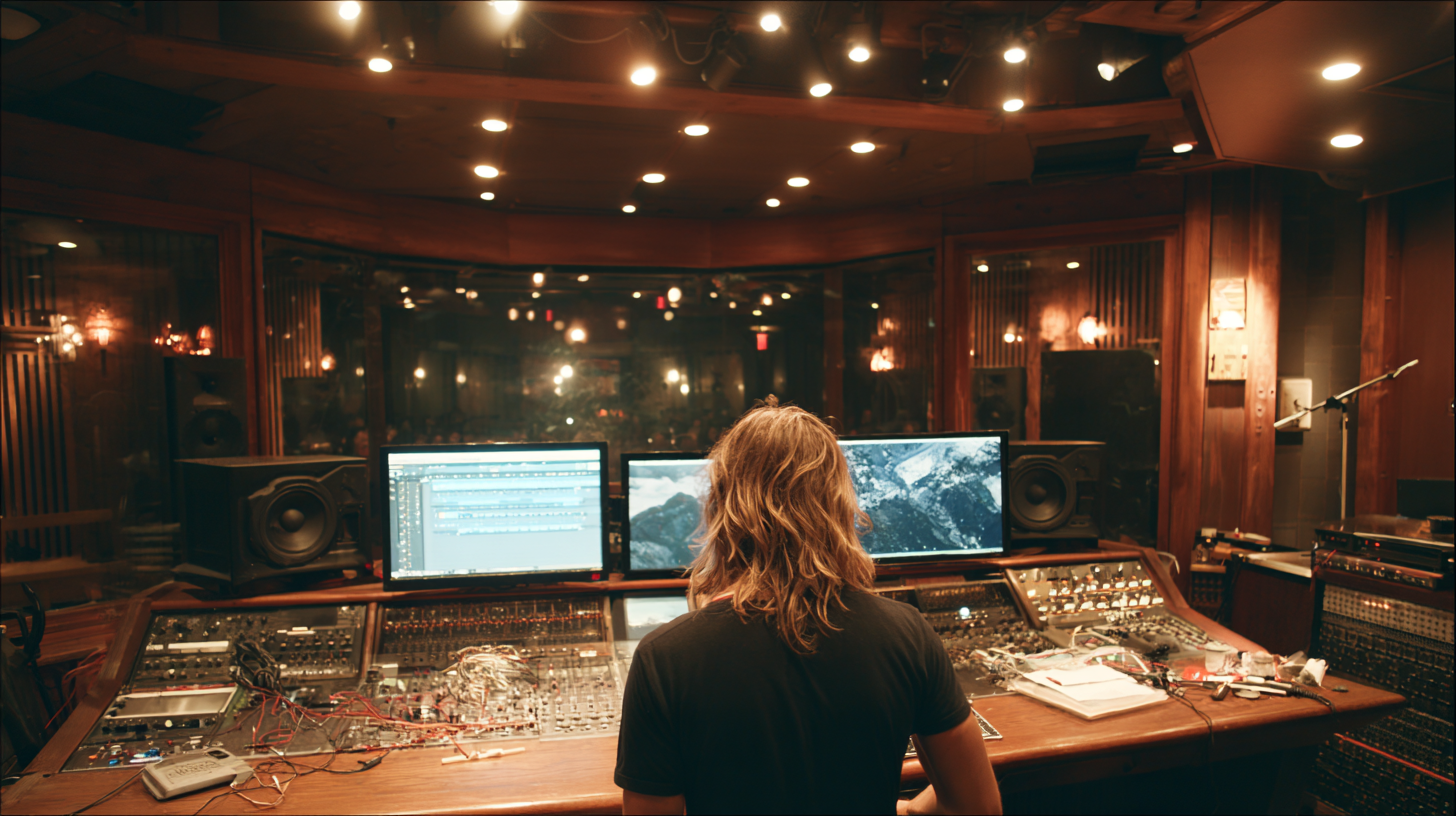
Building Loathe’s Post-Production Ear Candy w/ George Lever
Nail The Mix Staff
Loathe’s music is packed with those insane production moments that make you stop and ask, “How the hell did they make that sound?” It’s more than just heavy riffs; it’s a landscape of textures, ear candy, and atmospheres that set them apart. That unique sonic identity is no accident—it’s crafted with clever and creative post-production tricks.
We got an inside look at how producer George Lever built some of the iconic sounds for Loathe’s track “New Faces In The Dark” during one of our Nail The Mix sessions. Forget basic mixing for a second; we’re diving into how to turn ordinary sounds into signature moments. Let’s break down some of the killer techniques he shared.
Turning a Fire Extinguisher into a Rhythmic Pulse
You read that right. One of the key percussive textures in the track started as a sample of a fire extinguisher. The problem with a sound like this is its nature: a super-sharp, hard attack followed by a very short decay. In a dense metal mix, a sound like that can easily get lost or just feel tacked on. Instead of just letting it be a simple one-shot, George decided to make something much more interesting out of it.
The Creative Processing Chain
To give the fire extinguisher life, George built a complex effects chain designed to create a rhythmic, pulsing delay that would sit inside the groove. It wasn’t just about one delay; it was about layering processes to build character. The signal path looked something like this:
- Delay Pedal #1: The first layer of rhythmic repeats.
- Delay Pedal #2: A second delay running into the first, creating more complex patterns.
- Heavy Saturation: This is where the magic starts. By understanding what saturation is and how to apply it, he drove the delay repeats hard to distort them, giving them grit, harmonics, and a pulsing dynamic.
- Color Stage: He used Slate Digital’s Repeater plugin, but not as a delay. In “Tape” mode, it adds a unique color and texture to the sound.
- Room Reverb: To give the whole sound a sense of space and dimension, showcasing the creative role of reverb in a mix.
- EQ: The final, crucial shaping stage.
Carving Out the Mud with EQ
When you absolutely nuke a sound with saturation, you inevitably generate a ton of low-frequency information and weird resonances. George knew this texture didn’t need to provide the song’s low-end—the bass and kick drum have that covered. Leaving that rumble in would just create a muddy, cluttered mix.
The solution was surgical EQ. He used an aggressive high-pass filter to completely remove the unnecessary sub-bass. He then used a parametric equalizer to notch out a specific resonant frequency in the low-mids that was cluttering things up. This is a classic move in heavy production; knowing when and where to apply targeted EQ is key to achieving a clean and powerful mix.
The result isn’t just a fire extinguisher hit; it’s a distorted, pulsing, rhythmic element that’s subtle but impossible to ignore once you know it’s there.
Punchy and Cohesive Percussion
Loathe’s tracks are layered with additional percussion like claps, shakers, and tambourines that add groove and depth. To ensure they all felt like part of the same production, George created a consistent channel strip that he applied across these elements. The treatment on the claps is a perfect example.
The “Destroy Everything” Clap Trick
To make the claps punchy and aggressive, George reached for Soundtoys Devil-Lock. This plugin is famous for its extreme, smashing compression and distortion. He used it to completely destroy the dynamics, bringing down the wild peaks and making the claps sound incredibly thick and consistent.
This level of heavy-handed processing, achieved here with an extreme audio compressor setting, is one of the secrets that helps elements cut through a loud mix without needing a ton of volume. After an 11dB gain reduction from the plugin, he lowered the clip gain rather than pulling down the fader, which preserves fader resolution for finer volume automation later on.
Keeping the Low-End Tight
After all that creative processing, George added one more critical tool to the end of the percussion chain: a mono-maker plugin. Stereo effects, especially delays and reverbs, can spread low-frequency information across the stereo field, which can lead to a washed-out, unfocused low-end. By filtering everything below a certain point (e.g., 120-150Hz) to mono, he ensured the punch and foundation of the mix stayed locked in the center—a critical decision in the mono vs. stereo battle for low-end clarity.
Creative Stereo Widening Hacks
Sometimes an element in the mix feels too narrow or “stuck” in the middle. For a distorted piano-like synth, George pulled out another awesome trick, once again using Slate Digital’s Repeater.
He wasn’t using it for its delay capabilities. Instead, he engaged the “Tape” mode for its analog-style color and then used the “Spread” function. This feature introduces subtle timing and phase differences between the left and right channels, creating a natural-sounding stereo width without resorting to cheesy chorus effects. This subtle move was just enough to make the synth occupy a wider space, demonstrating how advanced panning and placement strategies can give elements their own dimension.
Building Your Own Textures
Creating these kinds of signature sounds involves:
- Radical Processing: Don’t be afraid to chain effects and push plugins like saturation and compression to their limits to build character.
- Corrective EQ: After you create chaos with heavy processing, use precise EQ to clean up the mud and make it fit in the mix.
- Smart Stereo Control: Use tools like mono-makers and stereo spreaders to control exactly where your sounds sit.
These are the kinds of techniques that separate a good mix from a great one. Learning the “what” is one thing, but seeing how a pro like George Lever actually makes these decisions in real-time is a game-changer for anyone learning how to mix music.
Loathe on Nail The Mix
George Lever mixes "New Faces In The Dark"
Get the Session
On Nail The Mix, you can watch George’s entire 8-hour mixing session for this Loathe song. You get the raw multitracks to practice on your own and can see every plugin, every fader move, and every decision that went into crafting this incredible production. Seeing the pros at work is the ultimate roadmap. Check out the full “New Faces In The Dark” session and start making your own ear candy.
Get a new set of multi-tracks every month from a world-class artist, a livestream with the producer who mixed it, 100+ tutorials, our exclusive plugins and more
Get Started for $1





